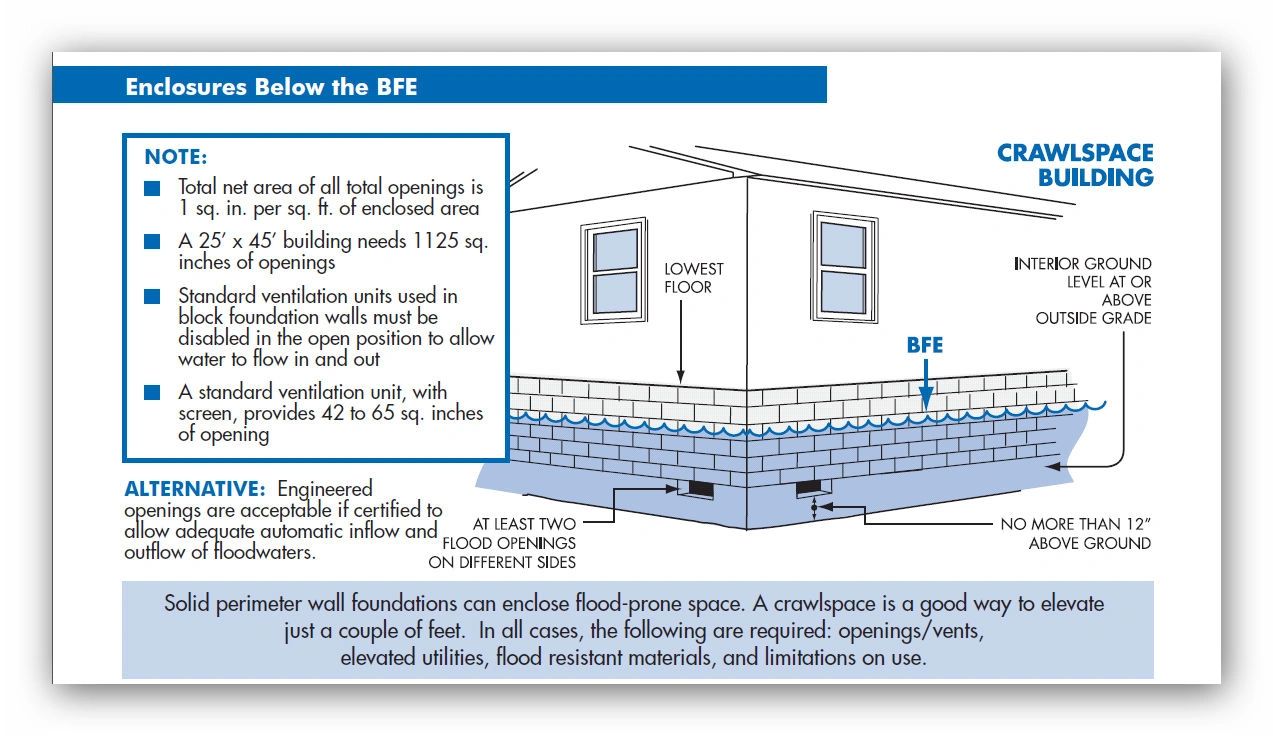

So you can't just look at the FEMA map and get the right number. The cost of an accurate elevation certificate is well worth it when you have the assurance that the BFE is correct. Mistakes calculating the BFE can really cost you through higher insurance premiums resulting from an incorrect policy rating or by denial of a LOMA removal request. Even once you have all the documents you need, and found all the numbers from all those lines I talked about, you have to interpolate between those lines to get the right BFE, read a graph or two, and pull some data out of the tables in the FIS. It's not easy to accurately find the BFE for a property. If it seems confusing, that's because it is. To get that number, you have to read the Flood Insurance Study. That is the location where a cross section of the river was created and it contains a BFE that is more accurate than the squiggly line, but the number isn't printed on the map.

On the FEMA floodplain maps, you'll also see a line across the floodplain with a hexagon at the end and a letter in the hexagon.

Using that squiggly line on the map as the BFE to determine a home’s elevation is the single most common mistake seen on elevation certificates and LOMAs. Believe it or not, that's not accurate enough for an elevation certificate or a LOMA because those products need a BFE to the nearest one-tenth of one foot. But they are often rounded to the nearest whole foot when the number goes on the map. When you look at the FEMA maps, the BFE is the squiggly line with the number next to it. So if you are in one of those zones, it's a good bet you need flood insurance and a BFE.ĭetermining the BFE correctly is essential to accurately rating a flood policy or qualifying for a removal from the SFHA with a Letter of Map Amendment (LOMA). The SFHA includes flood Zones A, AO, AH, A1-30, AE, A99, AR, AR/A1-30, AR/AE, AR/AO, AR/AH, AR/A, VO, V1-30, VE, and V. The SFHA is the area where the National Flood Insurance Program's (NFIP's) floodplain management regulations must be enforced and the area where the mandatory purchase of flood insurance applies. The land area covered by the base flood is called the Special Flood Hazard Area (SFHA) on FEMA's maps.
#Base flood elevation full
You can follow that link and download those full maps and studies.

It's a reasonable standard to insure against, but it is not a guarantee that it will flood only 1 time every 100 years and the flood will look exactly like it does on the maps.īFEs are shown on FEMA's Flood Insurance Rate Maps (FIRMs) and in the Flood Insurance Study (FIS) which are published by the Map Service Center for almost every community. The Base Flood Elevation is a baseline pulled together from historic weather data, local topography, and the best science available at the time. But it could flood less, or more, or many times a year, or not at all. Just in case those terms are new to you, the 1-percent annual chance flood means that, statistically, there's a 1% chance every year that there will be a flood that looks like the one on the FEMA maps. The base flood is also referred to as the 1-percent annual chance flood or 100-year flood. FEMA defines the Base Flood Elevation (BFE) as the computed elevation to which the flood is anticipated to rise during the base flood.


 0 kommentar(er)
0 kommentar(er)
